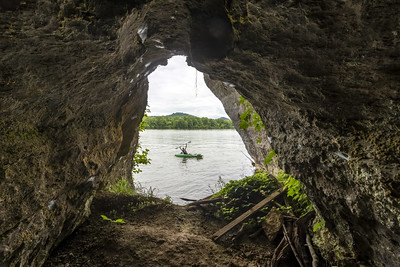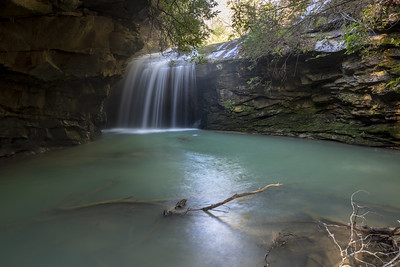Lessons from a Photographer of 15 years
I have been taking my interested in photography seriously for the past 15 years, during which I have shared approximately 13,000 photos online, and captured at least ten times more (excluding time-lapse videos). I have invested significant effort into organizing and describing my extensive collection, with a focus on photographing a region of the country that has largely been overlooked by previous generations of photographers.
I specialize in capturing landscapes that feature various natural elements, including caves, waterfalls, natural arches, rivers, and other natural features, as well as historical and prehistoric cultural sites.. My objective is not to become an influencer, but rather to earn respect in the field of photography, use it to make the world a better place, and if I am very fortunate, earn enough revenue to support my hobby.
From this journey, I have learned a few lessons that may be beneficial for individuals embarking on their own photography career. Some of my tips may be specific to the tools I use, and if you use different tools, consider drawing parallels from my discussion or explore new tools. The functions of the tools I demonstrate are practical and useful for any photographer.
Metadata is data about data. The EXIF data in your images is a type of metadata. When I describe an image on Flickr there is a title box, a description box, there are comments which other users can add, and there are metatags. I try to describe each image with words I would remember if I needed to search for that particular image.
Here are a few example images, and their associated metatags for your consideration.
On Flickr I can search my own content, I can search my friends content exclusively, I can search all my friends content, I can search the entire platform, or I can search the entire platform for Creative Common images. Sure, there are some downsides to Flickr, like it not being the cool and popular place anymore, how it's hard to identify active communities, and its user interface is unweidly and doesn't work sometimes (refreshing the browner page often fixes this issue). But there is even more to love about Flickr which I touch on in the next section.
This section is important enought to break down into two parts: Local Organization and Cloud Organization. Local organization is how you have your data organized on your computer. Ideally this is where you keep your camera raw files. Cloud organization can be a private drive where you have your stuff off-site and backed up, or it can be a public image host like Flickr, Smugmug, Instagram, or Facebook. I should also note that metadata is an important part of organization, but not the only kind of organization that needs to be done when tracking a large data archive.
Folders y'all: use 'em. File Explorer in Windows is my best friend, and I organize my data in folders and subfolders. What follows a snippet of my organization technique on my own local computer.
Folder template
YYYY/MM-DD - [Description of Folder's Photos]
Subfolders
/ - Raw files from cameras.
/docs - Documentation about the trip. Could include scientific papers associated with the subject, magazine, website, books, articles, or other documentation. Could include landowner contact information.
/gps - GPS points and tracks of the trip in .CSV or .GPX format, processed GPS tracks, geotagged camera photos, geotagged drone photos, other relevant GIS data. An an Android user, the software I use is Locus Pro, and GPS Average.
/keep - Finished JPGs and videos.
/photos by others - Subfolders for individuals who have shared photos with my from the same trip.
/recorder - Google Recorder app output of .WAV or .MP3 and a transcribed .TXT file. This is an excellent tool to quickly make notes.
/video- Videos, Premiere Pro files.
Like folders and subfolders, Flickr has collections and albums. I use these to organize my data in the exact same way as I do my local data. Instead of YYYY/MM-DD - [Description of Folder's Photos] I use [collection]/[album] where the collection is YYYY and the album is YYYY/MM-DD - [Description of Folder's Photos].
For example, the album 2021/08/08 - Cohutta Wilderness is nested inside a collection called 2021.
Having a clear vision for why you take photos and what you want to photograph is important. Do you aspire to shoot weddings, events, landscapes, macros, or aerial imagery using a drone? Who is your target audience? Are you trying to impress friends, supplement a newsletter, record history or science, or receive some perks from a brand's marketing team? I suggest writing a "mission statement" and keeping it readily available. If you ever need to adjust or revisit it, you'll have it as a guiding principle.
My own mission statement, which you may remember from the first paragraph of this post reads,
I hope that the above advice is useful to you. Feel free to share with me your own advice in the comments.
I specialize in capturing landscapes that feature various natural elements, including caves, waterfalls, natural arches, rivers, and other natural features, as well as historical and prehistoric cultural sites.. My objective is not to become an influencer, but rather to earn respect in the field of photography, use it to make the world a better place, and if I am very fortunate, earn enough revenue to support my hobby.
From this journey, I have learned a few lessons that may be beneficial for individuals embarking on their own photography career. Some of my tips may be specific to the tools I use, and if you use different tools, consider drawing parallels from my discussion or explore new tools. The functions of the tools I demonstrate are practical and useful for any photographer.
METADATA
“Any system is only as good as the metadata that it ingests.” ― Chris Bulock
Metadata is data about data. The EXIF data in your images is a type of metadata. When I describe an image on Flickr there is a title box, a description box, there are comments which other users can add, and there are metatags. I try to describe each image with words I would remember if I needed to search for that particular image.
Here are a few example images, and their associated metatags for your consideration.
On Flickr I can search my own content, I can search my friends content exclusively, I can search all my friends content, I can search the entire platform, or I can search the entire platform for Creative Common images. Sure, there are some downsides to Flickr, like it not being the cool and popular place anymore, how it's hard to identify active communities, and its user interface is unweidly and doesn't work sometimes (refreshing the browner page often fixes this issue). But there is even more to love about Flickr which I touch on in the next section.
ORGANIZATION
“For every minute spent organizing, an hour is earned.” – Anonymous.
This section is important enought to break down into two parts: Local Organization and Cloud Organization. Local organization is how you have your data organized on your computer. Ideally this is where you keep your camera raw files. Cloud organization can be a private drive where you have your stuff off-site and backed up, or it can be a public image host like Flickr, Smugmug, Instagram, or Facebook. I should also note that metadata is an important part of organization, but not the only kind of organization that needs to be done when tracking a large data archive.
Local Organization
Folders y'all: use 'em. File Explorer in Windows is my best friend, and I organize my data in folders and subfolders. What follows a snippet of my organization technique on my own local computer.
Folder template
YYYY/MM-DD - [Description of Folder's Photos]
Subfolders
/ - Raw files from cameras.
/docs - Documentation about the trip. Could include scientific papers associated with the subject, magazine, website, books, articles, or other documentation. Could include landowner contact information.
/gps - GPS points and tracks of the trip in .CSV or .GPX format, processed GPS tracks, geotagged camera photos, geotagged drone photos, other relevant GIS data. An an Android user, the software I use is Locus Pro, and GPS Average.
/keep - Finished JPGs and videos.
/photos by others - Subfolders for individuals who have shared photos with my from the same trip.
/recorder - Google Recorder app output of .WAV or .MP3 and a transcribed .TXT file. This is an excellent tool to quickly make notes.
/video- Videos, Premiere Pro files.
Cloud Organization
Like folders and subfolders, Flickr has collections and albums. I use these to organize my data in the exact same way as I do my local data. Instead of YYYY/MM-DD - [Description of Folder's Photos] I use [collection]/[album] where the collection is YYYY and the album is YYYY/MM-DD - [Description of Folder's Photos].
For example, the album 2021/08/08 - Cohutta Wilderness is nested inside a collection called 2021.
BIG PICTURE STUFF
“It's hard for young players to see the big picture. They just see three or four years down the road.” – Kareem Abdul-Jabbar
Having a clear vision for why you take photos and what you want to photograph is important. Do you aspire to shoot weddings, events, landscapes, macros, or aerial imagery using a drone? Who is your target audience? Are you trying to impress friends, supplement a newsletter, record history or science, or receive some perks from a brand's marketing team? I suggest writing a "mission statement" and keeping it readily available. If you ever need to adjust or revisit it, you'll have it as a guiding principle.
My own mission statement, which you may remember from the first paragraph of this post reads,
-
"I specialize in capturing landscapes that feature various natural elements, including caves, waterfalls, natural arches, rivers, and other natural features, as well as historical and prehistoric cultural sites."
I hope that the above advice is useful to you. Feel free to share with me your own advice in the comments.



Comments